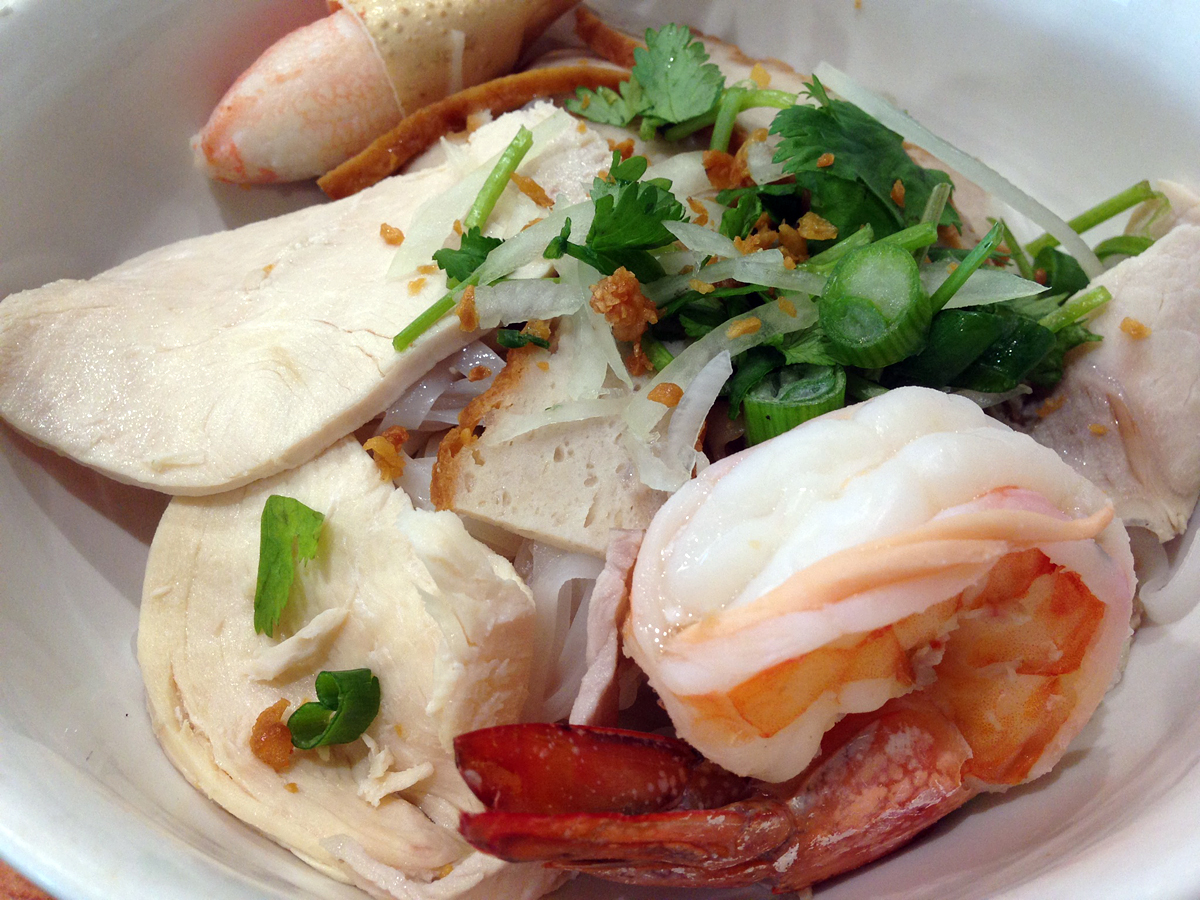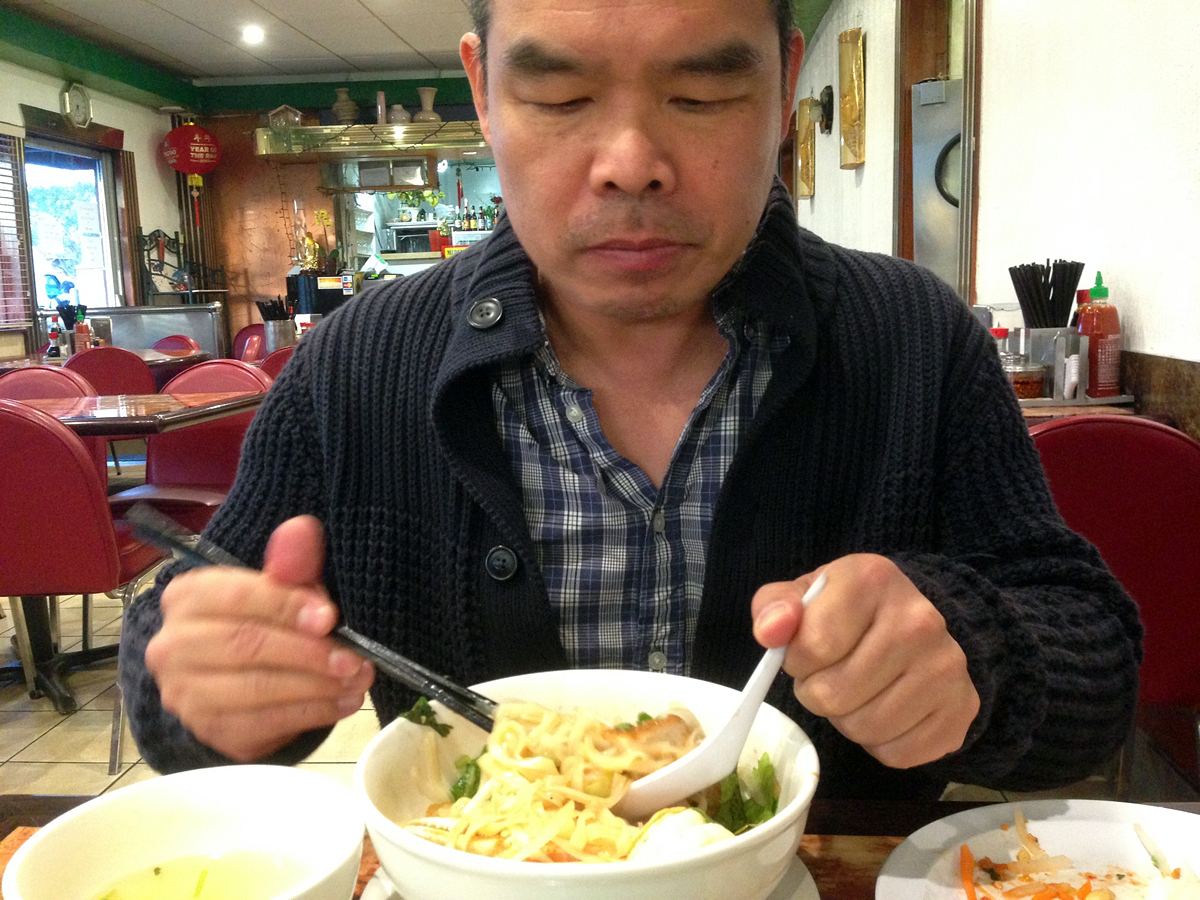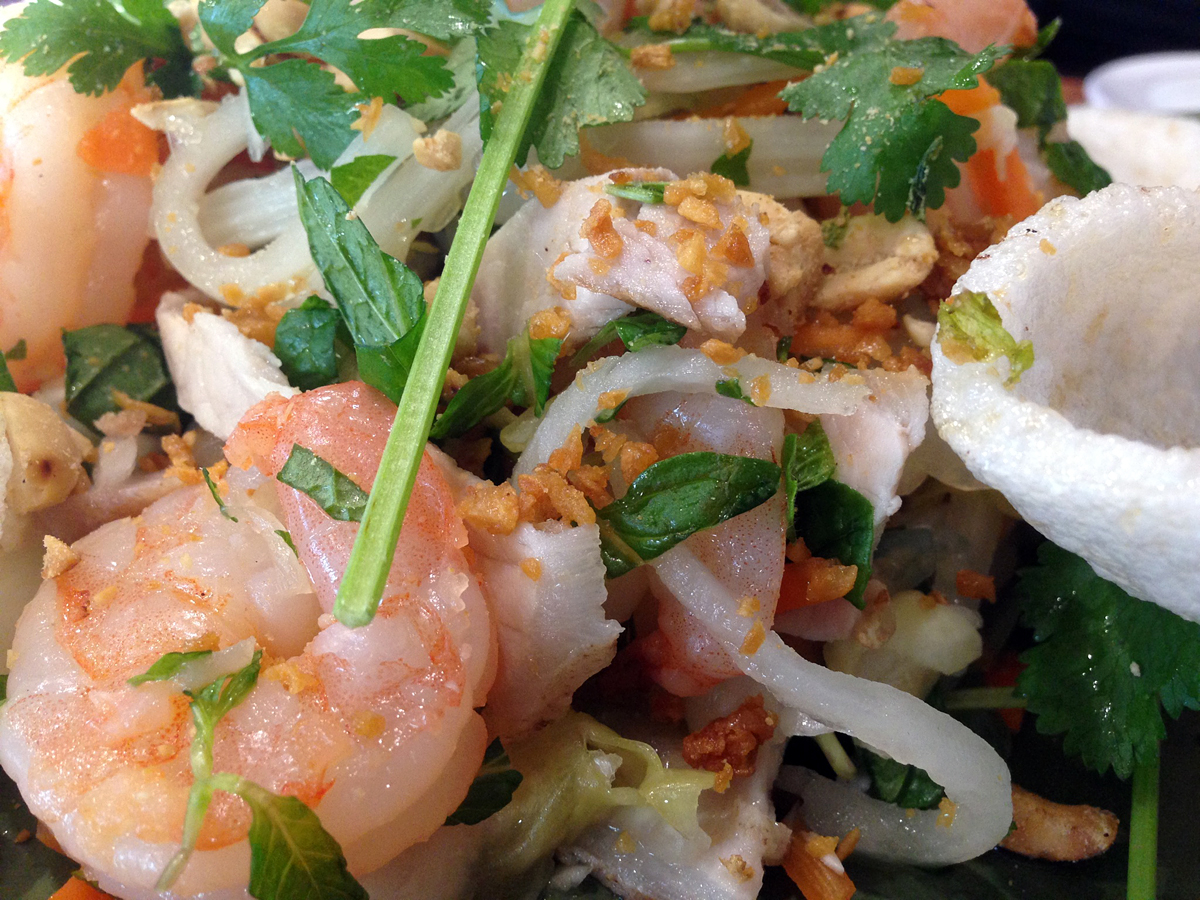
Like many Americans, I'm highly suggestible when it comes to food. Tell me that Tết has arrived, for example, and I'm suddenly, compulsively in the mood for Vietnamese food. This Lunar New Year has a special historical resonance, too: we're coming up on the 40th anniversary of the Fall of Saigon.
It wasn't long after 1975 that Dalat opened in San Jose, one of California's twin hubs for Vietnamese culture in California, along with Orange County. Today, Dalat is a popular brunch and lunch destination, especially for those in the mood for hủ tiếu, a noodle dish that could be considered a cousin of the phenomenally famous phở.
There's no one way to prepare hủ tiếu, but Andrew Lam is game to try describing the dish. He's a writer and editor with New American Media and the author of three books, including East Eats West. Hủ tiếu, he says, is "kind of pan-Asian," something the South Vietnamese borrowed from neighbors in Cambodia, Thailand and China and then proceeded to modify. This mashup approach appears to be a theme with Vietnamese cuisine.

The way Dalat makes it, there's a lovely pork bone-based broth, rice noodle, shrimp, crab, sliced pork, green onion, cilantro, sauteed garlic and shallots. "Especially Southern dishes tend to have a lot of herbs and vegetables, cause it's a tropical world," says Lam. A lot of Vietnamese like to order it with the soup on the side and the noodle dry, and that's how we order it, spooning the broth over the noodles. For those game to try this at home, here's one recipe.
In the first days after the Vietnam War, refugees landed in many cities throughout the United States. They began to gather in large numbers in San Jose in the 1980s to take advantage of the manufacturing work available in Silicon Valley. A couple of entrepreneurs, Chieu Le and Henry Le, had a stroke of brilliance: Why not serve banh mi to the hungry masses at lunch out of a food truck? Thus, the chain Lee's Sandwiches was born.
